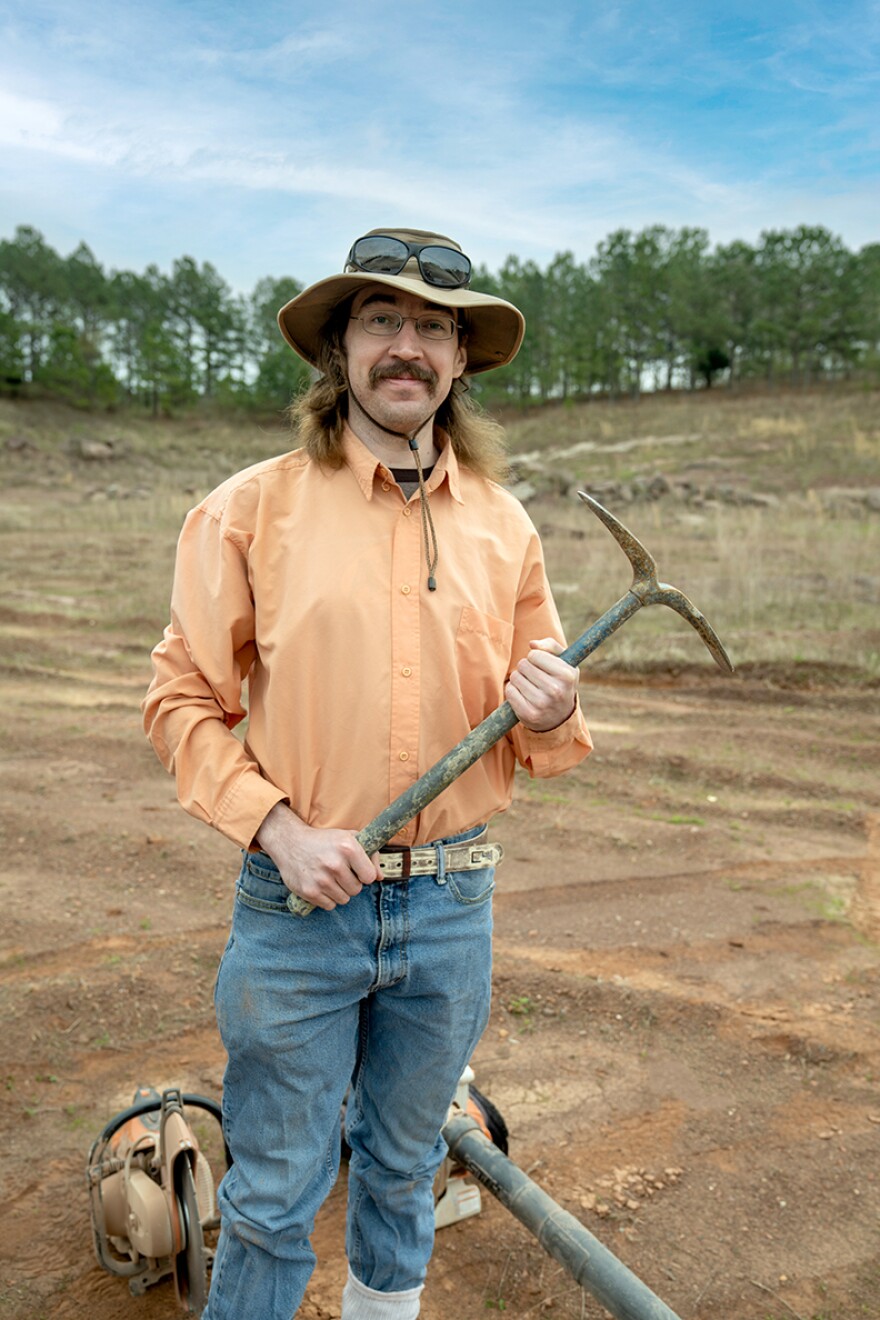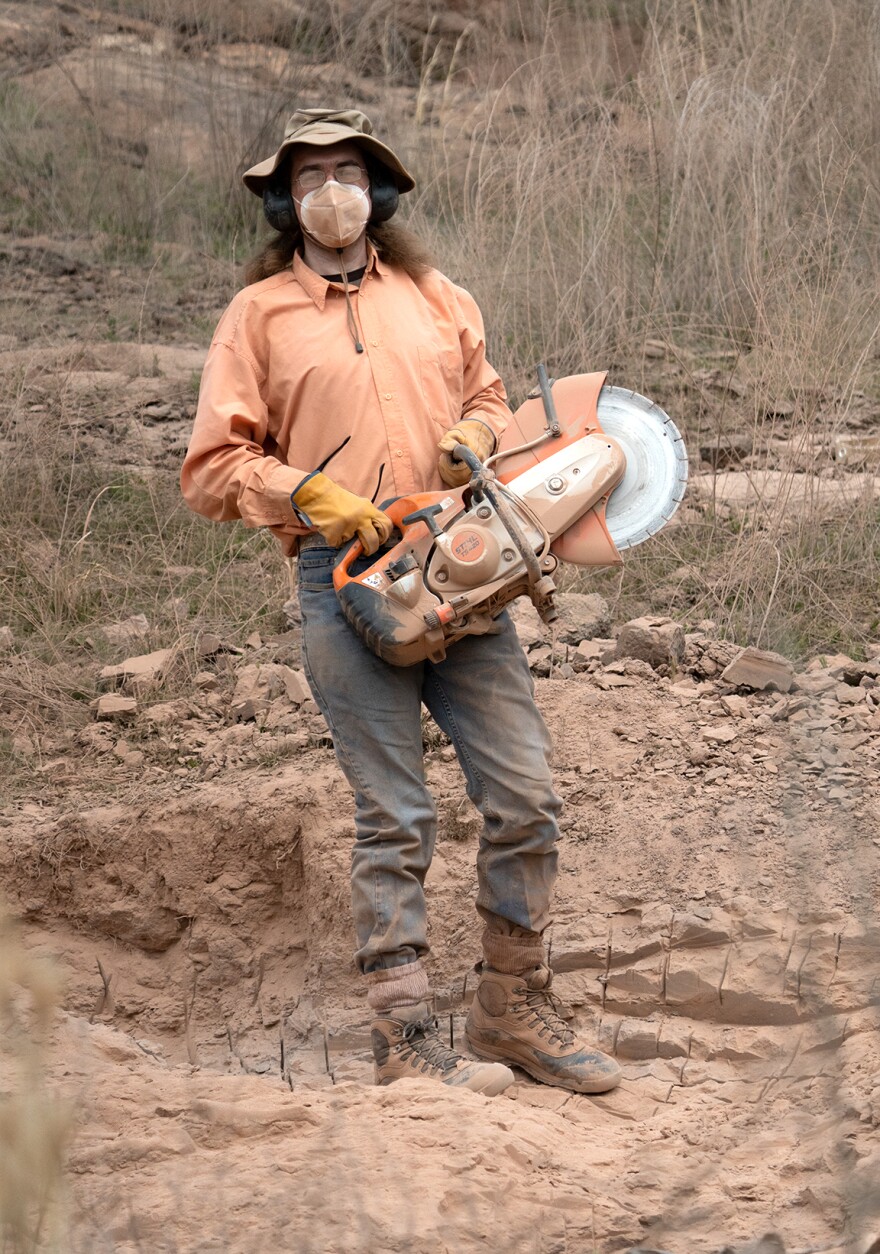A dig in eastern North Carolina last week had a scientist up to his armpits in mud and led to some great finds for a museum collection, including fossils from the age of dinosaurs. The paleontologist that led the dig is also hoping to someday solve an enduring Onslow County fossil mystery.
Christian Kammerer is the Research Curator of Paleontology at the North Carolina Museum of Natural Sciences, and he spent last week digging around eastern North Carolina to gather prehistoric fossils for the museum’s collection.

He said, “Places like Topsail, Carolina Beach, Emerald Isle, all are right above very fossiliferous rock layers, so the tide actually will wash fossils up on the beach.”
Unlike paleontological finds out west, Kammerer wasn’t hiking deserts and dry creek beds for T-rex skeletons and stegosaurus horns. In addition to beachcombing, his team also searched other ENC waterways for remnants of the past.
“The state's big rivers, like the Tar and the Cape Fear, they cut through rock that is rich in fossils and then redeposits those fossils, like in creek beds and along the banks,” he explained, “So, earlier (last) week we were out along a tributary of the Tar River, collecting fossils from the age of dinosaurs.”
Related: Weird Science: Licking rocks, curdled milk, and other interesting aspects of paleontology
Most of what the dig uncovered was, perhaps not surprisingly, tied to marine life. Kammerer said, "For most of the past 80 or so million years, eastern North Carolina was underwater due to higher global sea levels, so most of the fossils that we're getting are marine in nature. So, lots of sharks’ teeth, lots of shells, various types of like clams and oysters, scallops, things like that.”
But there were some larger specimens collected as well. He said, “We found several mosasaur teeth this week, those are the enormous sea lizards that lived at the end of the Cretaceous period. More rarely, we have land animals that have been, we think, washed into these sediments, so they were living on land, but then after they died, their remains were washed into the ocean. And so that's where we're getting, you know, potentially dinosaur specimens. Getting crocodiles and turtles, which are sort of semi-aquatic, but we might not be expecting to see out in the open ocean.”
He says they haven’t found them themselves, but there are records of fossils from the Cretaceous period that were found in eastern North Carolina — and he added that little is known about what is now the eastern United States in the Mesozoic era.
“Eastern North America, which we call Appalachia, and western North America that we call Laramidia, were these separate like island continents with different animals in them, completely different ecosystems,” Kammerer said. “But while we have a very good idea about the fossil record of Laramidia, we know very, very little about the fossil record of Appalachia by comparison.”

And, like most paleontologists, he’s hoping to score a unique find in a North Carolina dig. “We can tell what groups of dinosaurs they belong to, so whether it's like a tyrannosaur or a duck-billed dinosaur or horn dinosaurs, that kind of thing, but have never found any dinosaur specimens that are complete enough to give a new species name to. We wouldn't need too much, you know? If it's if it's the right bone, it can be diagnostic. But right now, it's mostly teeth and kind of like vertebra fragments, so it's not really enough to go on to give them a new name,” Kammerer said.
Out west, paleontologists often hike through desert territory to find and identify skeletons that have often been uncovered by humans, shifting lands or weather impacts, but Kammerer said the work in eastern North Carolina is much more wet and muddy.
He said, “We were, you know, chest deep in creek water just shoveling muck through sieves in order to get at some of these fossils that are washed out of the surrounding banks. So, you're basically just like shoveling mud all day.”
There are many different types of fossils in eastern North Carolina, including the official state fossil — and tourist Holy Grail — the megalodon tooth. Kammerer said, “You can still find them in our rivers on our beaches. Offshore diving is becoming a very popular activity to find impressive sharks teeth. We also have a very kind of diverse set of ages represented in the state. So, we have everything from the earliest animals, through the age of dinosaurs, the age of mammals, right up to the Ice Age.”
North Carolina’s first state geologist, Ebenezer Emmons, was the first to document the existence of fossilized teeth from the extinct giant shark, Carcharodon megalodon, but that’s not his only history — making find. Kammerer said Emmons discovered one specimen that is still a bit of an eastern North Carolina mystery.
“He found these weird little bean-shaped fossils that have become known as Emmons teeth and Emmons teeth are very common. You can find them by the thousands out in places like Pender County, New Hanover County, a lot of those areas, Onslow County, but we still have no idea what these are part of.”
They think the fossils are likely a fish bone, and not a tooth at all, highlighting the ongoing process of re-evaluating and refining understanding of fossil identifications.
“Even though we have thousands of specimens of the Emmons teeth, we've never found a whole skeleton of whatever the Emmons tooth belongs to. So, that's kind of a fundamental gap in our understanding of one of the most abundant North Carolina fossils. I'm hopeful, you know, with enough folks out, there that I'll live to see the day when we know what the Emmons tooth belonged to. We're not there yet. There's still a lot left to find and really important discoveries to be made, even by people just looking around in their backyard or combing at the beach.”


